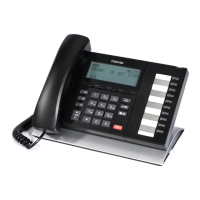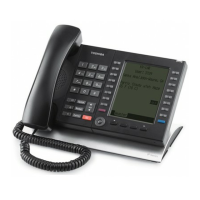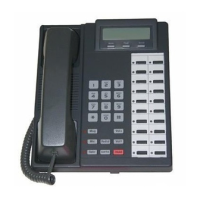SYSTEM TOPOLOGY Stand-Alone
1-2 Installation Manual June, 2011
SYSTEM TOPOLOGY Understanding the IPedge system requires a discussion of IPedge
network configuration, the system topology. Every IPedge server has the
same capability. How each server functions is based on that server’s
position on the network topology.
Stand-Alone A Stand-Alone System (SAS) is a single IPedge. Although a business
entity may own multiple Stand-Alone Systems, each SAS is independent
of the others. There is no network connection between the systems.
Enterprise Systems An enterprise system is two or more nodes, at a single site or multiple
sites. The nodes are connected by a wide area network.
The Primary system sends commands and directs database backup and
restore functions via this network. The nodes can also be connected via
IPedge Net if call processing transparency is required. Please refer to
Figure 1-2. Enterprise systems are described in greater detail below.
Node A Node is an individual IPedge or Strata CIX system in an Enterprise
System. A Node is defined by the logical relationship to the other nodes
within an IPedge Net connected Enterprise System, regardless of its
location. Nodes can be connected through LAN or WAN. The nodes may
be installed at one or more sites.
Site Within this document, the term Site refers to the physical location where
the IPedge or CIX systems are installed. At a site, the systems can be
Stand-Alone, one or more Nodes or an IPedge Net Enterprise System.
IPedge NODES In every Enterprise and Networked IPedge system there will be one
Primary Node and any remaining nodes will be Member Nodes. The
Primary and Member labels apply to the Enterprise Manager location and
system database maintenance and backup.
Unlike some other systems the primary does not control the call
processing functions of the other (member) nodes. In a multi-node IPedge
system the loss of a single node effects only the resources on that node.
If the primary node fails the other nodes will continue to function. Only the
resources on the primary node will be lost. The system administrator can
login directly to a member node if changes are necessary while the
primary node is not operating.
Primary Node When the first node of an Enterprise System is created, it is by default a
Primary Node. At any time, an Enterprise System can have only one
Primary Node. As new nodes are added into the Enterprise System, they
are defined as Member Nodes.
The Node identification and IP address of the Primary Node is
programmed into to each Member Node as they are attached. Member
nodes will accept programming commands and requests for database
backup only from the Primary Node.
Member Node Member nodes are ‘managed remotely’ by Enterprise Manager in the
primary node. A Member Node will accept SNMP requests only from the
Primary Node. A member node will accept a very limited subset of
commands from a user terminal logged into the Enterprise Manager on

